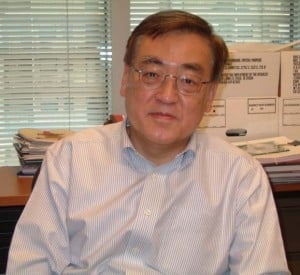Date: Thursday November 13th 2014
Time: 12:00 pm to 1:00 pm
Location: JHU Homewood Campus, Hackerman Hall B-17
Speaker: Dr. Byung L. Les Lee
Program Manager for Mechanics of Multifunctional Materials & Microsystems,
Air Force Office of Scientific Research,
875 N. Randolph Street, Suite 325, Room 3112, Arlington, VA 22203
Title:
MECHANICS OF MULTIFUNCTIONAL MATERIALS & MICROSYSTEMS
Abstract:
The area of multifunctional structures has become prominent in the last few years with a number of definitions and concepts being put forth. The most popular definition is a structure that has the ability to perform multiple tasks through judicious combinations of structural integrity with specific functional properties dictated by the system requirements. Some researchers take a rather pragmatic view of multifunctional design by starting with a conventional composite and incorporating the additional layers with specific functionality. Others try to emulate biological systems, in which jointed frameworks and complex materials impart active functionality at multiple length scales. It is hoped that individual material elements are concurrently participating in distinct, beneficial physical processes thereby delivering truly dramatic improvements in system-level efficiency instead of incremental improvements. Among various visionary contexts for developing a new generation of multifunctional structures, the most revolutionary one appears to be “autonomic” systems that can sense, diagnose and respond to external stimuli with minimal intervention. One prominent example has been “self-healing” polymers and composites that mimic the autonomic repair process of biological systems in response to damage. Ever since this novel concept was demonstrated barely thirteen years ago, the worldwide support has allowed focusing extensive research efforts to the subject of autonomic structures in ever-expanding scope. These efforts have established the concepts of “micro-vascular composites for self-cooling,” “neurological system inspired network for self-sensing and actuation,” “self-sustaining structures with integrated power sources,” etc. Such structures would be able to attain each of specific functionalities, adapt to new situations, and perhaps reconfigure them to respond to a perceived threat or change of environment. Each of the cited examples points the values of a truly autonomic system capable of multiple functions to survive its operating condition and environment for longer periods of time than the traditional structures can endure.
About the Speaker:
Dr. Lee is a Program Manager for Mechanics of Multifunctional Materials & Microsystems at the US AFOSR in Arlington, Va. His primary responsibilities include the establishment of science base for integration of emerging materials and micro-devices into future aerospace systems requiring multi-functionality. Dr. Lee joined AFOSR in 2001, following12 years on the faculty of Dept. of Engineering Science & Mechanics at the Pennsylvania State University. He has presided over a number of multi-disciplinary research initiatives, covering a broad range of topics such as “self-healing materials,” “neurological system-inspired sensory network,” “self-sustaining structures with integrated power sources,” “load-bearing antenna systems,” and “biomolecular autonomic materials.” At Penn State, he taught the engineering mechanics courses and performed the sponsored research in the areas of: nanocomposites, penetration failure mechanics, fatigue behavior, and manufacturing science of composites. Prior to his academic career, he had 10 years’ industrial research experience and 3 years’ government research experience.
Faculty Host:Prof. Somnath Ghosh, 203 Latrobe, 410-516-7833, [email protected]
For more information, please contact Khairul Bariah Abd Majid, 410-516-5033, [email protected]


